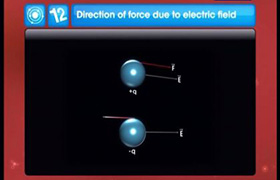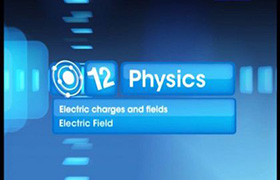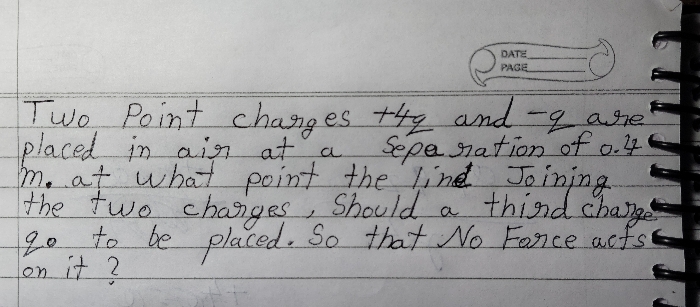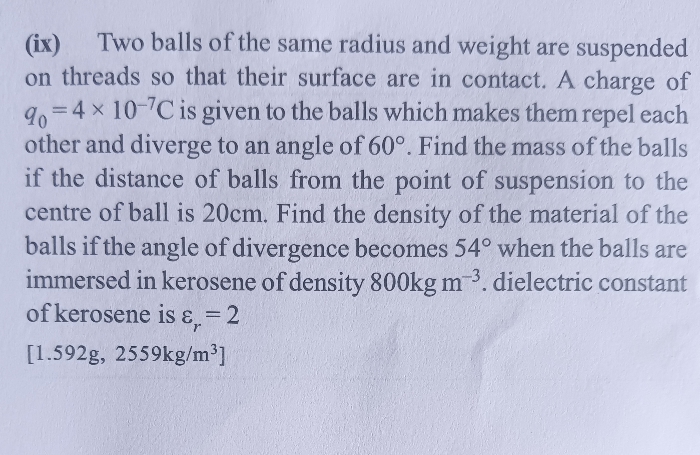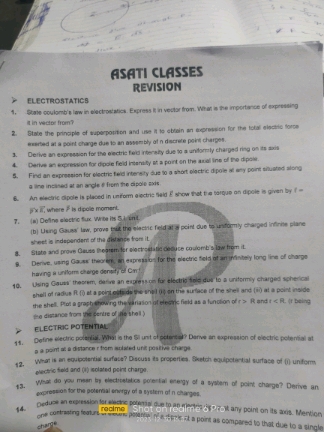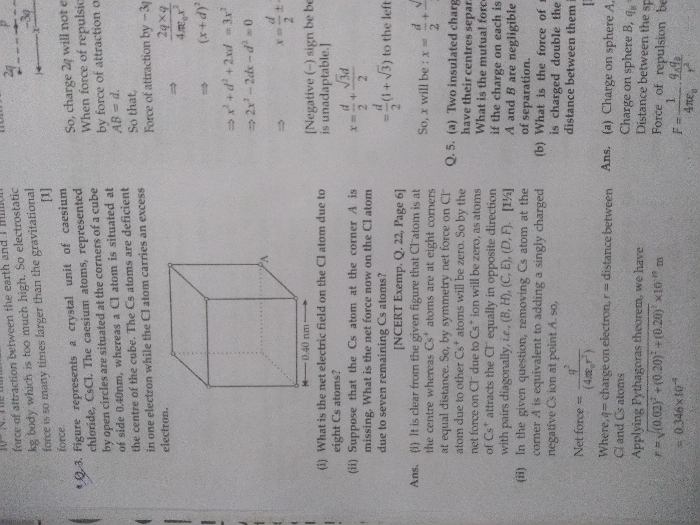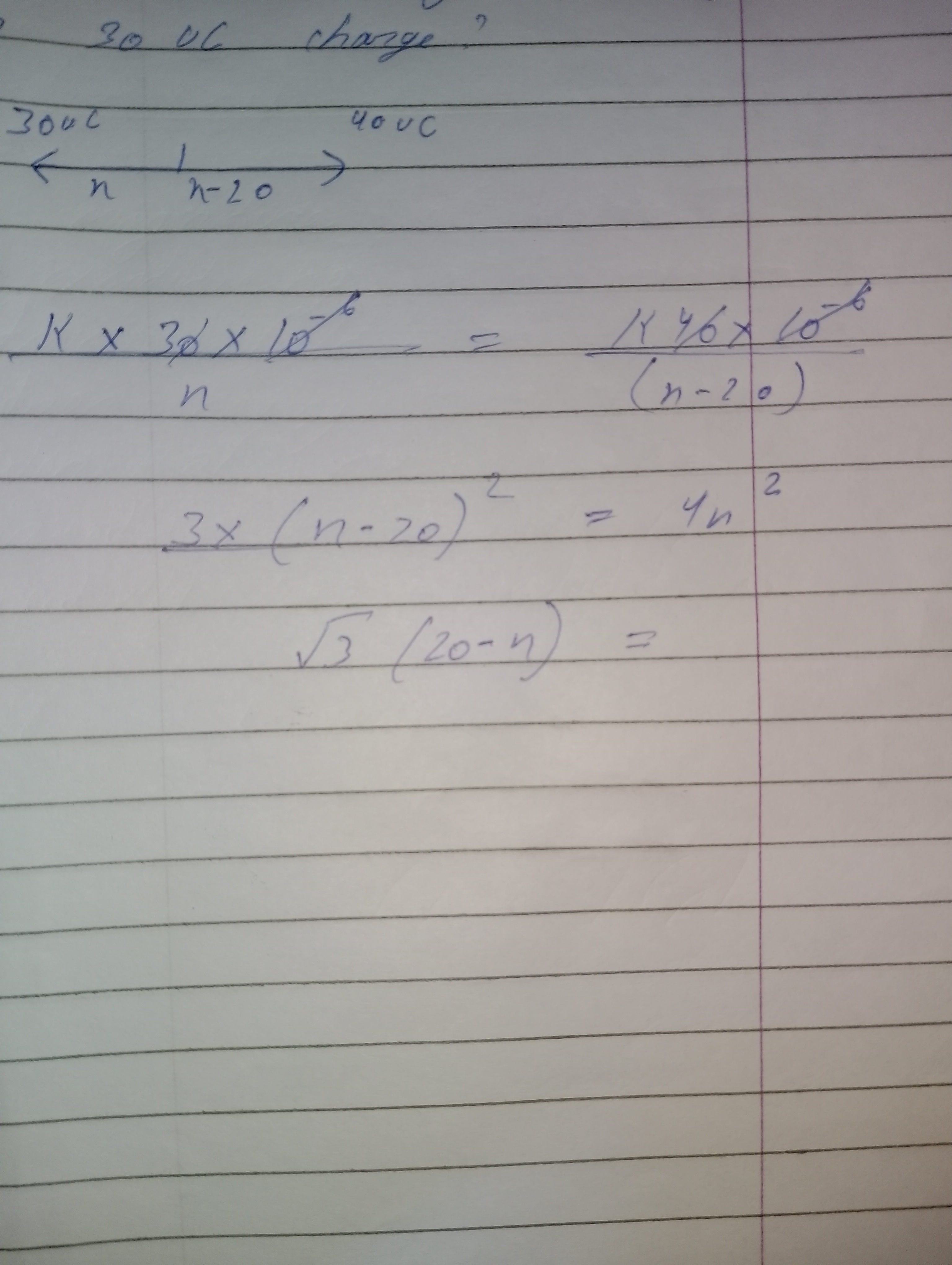CBSE Class 12-science Answered
Three charges \( 1 \mathrm{C},-1 \mathrm{C} \), and \( 2 \mathrm{C} \) are kept on \( X \) axis \( -5 \mathrm{~cm}, x=0 \mathrm{~cm} \) amd \( x=10 \mathrm{~cm} \) respectively find net force one each of them
Asked by marshelojigas | 28 Jun, 2022, 06:46: AM
I assume the question is as given below
" Three charges 1 C, -1 C , and 2 C are kept on X axis at x = -5 cm,
x=0 cm and x=10 cm respectively find net force one each of them "
----------------------------------

Force F between two charges q1 and q2 that are separated by a distance d is given as

where K = 1/(4πεo ) = 9 × 109 N m2 C-2 is Coulombs constant and εo is permittivity of free space.
In this given charge configuration, there are three types of forces .
F1 is attractive force between charges 1 C and -1 C ; 

F2 is attractive force between charges -1 C and 2 C ; 

F3 is repulsive force between charges 1 C and 2 C ; 

Net force on 1 C charge = F1 - F3 = ( 3.600 -0.800) × 1012 N = 2.800 × 1012 N
Net force on -1 C charge = F1 - F2 = ( 3.600 -1.800) × 1012 N = 1.800 × 1012 N
Net force on 2 C charge = F2 - F3 = ( 1.800 -0.800) × 1012 N = 1.000 × 1012 N
Answered by Thiyagarajan K | 28 Jun, 2022, 08:27: AM
Concept Videos
CBSE 12-science - Physics
Asked by adityagalar2007 | 06 Apr, 2024, 13:06: PM
CBSE 12-science - Physics
Asked by amlanmcob | 06 Apr, 2024, 12:27: PM
CBSE 12-science - Physics
Asked by manishamunda787 | 02 Apr, 2024, 11:07: AM
CBSE 12-science - Physics
Asked by kalsichaitanya | 30 Dec, 2023, 16:08: PM
CBSE 12-science - Physics
Asked by glorialyanzaw | 13 Oct, 2023, 17:53: PM
CBSE 12-science - Physics
Asked by srishtijha944 | 15 Jul, 2022, 21:55: PM
CBSE 12-science - Physics
Asked by marshelojigas | 28 Jun, 2022, 06:46: AM
CBSE 12-science - Physics
Asked by arjunsah797 | 01 Apr, 2022, 07:31: AM

